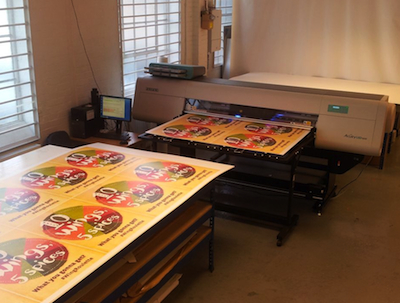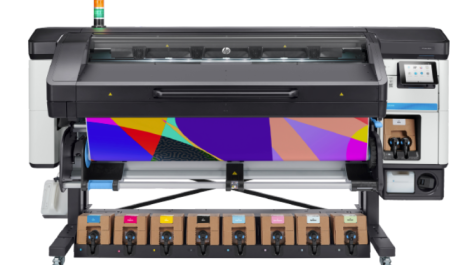Fujifilm Acuity LED 1600
A lot of point of sale gets printed every year, for the biggest supermarkets and the smallest corner shops. What is the potential for adding retail printing to your armoury?
Retail printing is a market populated by a number of specialist providers, who have good relationships with the major retailers and agencies that buy point of sale/point of purchase print (POS or POP), often also with machinery and expertise such as cardboard engineering that aligns directly with the needs of the market.
Is it therefore a smart direction for a non-specialist printing company to take itself in? It is a really good question, according to Phil McMullin, UK sales manager for ProGraphics at Epson. ‘Whenever people ask me about diversifying into other markets, the first question is: what customer base have they got at the moment? Existing customers are much easier to diversify to. If it was my business, I would worry about the extra time and money required in finding new customers that ask, what experience do you have in providing point of sale for other customers, versus other companies that specialise in this?
‘But most commercial printers will have a customer base that they can tap into. It takes a brave person to make that step, and you have to think very carefully about your USP versus an existing point of sale printer. It’s unlikely to be new opportunities, because usually customers will already be having it fulfilled in some way.’
Stuart Cole, national sales manager for Industrial products (UV) at Mimaki reseller Hybrid Services, is a little more optimistic about prospects for diversifying into retail/POS print. He said: ‘Point of sale has always been a strong area of requirement, and I think it’s getting stronger because in the retail market, stores are changing. There has been this revolution in supermarkets becoming more localised, with a higher turnover of products to try and attract more people, so point of sale is only growing.
‘There are the big corporate players but they spray it around so they are not tied to one supplier. Some are also bringing the print in-house, but they have over-flow requirements, so there are all sorts of angles: diversity, cost effectiveness, the here-and-now requirement that they cannot achieve themselves. People are also always looking for a better price. It’s fair to say that it’s an area that people are being asked to quote on and get involved in.’
Studying the market and formulating a coherent plan for approaching it are the vital opening steps, as can probably be said with any new market direction. This will enable a more informed discussion with equipment sellers, leading to the identification of the right printing and finishing technology to go forward with. Hybrid Services covers three areas of technology: Sign & Graphics, involving solvent, SUV (hybrid solvent and UV), and Latex roll-fed machines, using metallic colours and whites, oranges and greens; Industrial Products – hugely diverse in terms of applications, with UV cured, direct to substrate machines; and Textiles, again an enormous range of opportunities covering soft signage and dye sublimation. It is evident that any of these very different technology areas might cross over into retail/POS printing, making it all the more important that print companies identify exactly the route they intend to take.
‘If someone says they want to do point of sale and focus on a certain area, then we can give them steerage,’ Mr Cole continued. ‘Unfortunately a lot of the time people don’t know what they want to do, and if they say they want to do everything, that makes it very difficult.’
One such question that needs to be answered is whether you are targeting interior or exterior point of sale work. If it is exterior, you will be coming up against traditional sign makers that can offer fabric as well as easier sign jobs such as banners and flexible signage; they may also have the metal work and routing capabilities to cut letters for point of sale displays that you may not.
Cardboard engineering skills will be useful for developing innovative new ideas for point of sale items, but these are not easy skills to come by and are even less easy to bluff. The smart move, at least in the first instance, is to partner with a specialist, said Phil McMullin. Likewise, the intricate cutting and finishing that can be required in retail print work requires expensive flatbed cutting and creasing machinery. ‘There are finishing houses that cut, fold and crease. So unless you can justify investment in that kind of expertise and technology, you may want to put that work out,’ suggested Stuart Cole.
The key to success, according to Phil McMullin, is to start with existing customers and have a coherent plan. ‘The mistake that companies make is to get a first batch of prospects which they are very pleased with, but then they don’t carry on with it; the work dries up, and they wonder why they invested in that kit. It is important to know your objectives and how you will measure success. For some people, diversification is not the right thing; for others, there’s a gold mine in their existing clients.’
Stuart Cole identified having a diversity of print capability as being important – being able to meet customer demands, and working with a supplier that understands the capabilities of the machines. ‘Print quality is important, as is reliability; being honest with the customer, charging a fair price for a fair job,’ he said.





